One of my many interests in history is exploring food. What areas of the world are famous for what kind of dish? How did we end up with the cuisines we know today? As I was searching the Museum’s vast Collection online, using search words like “food” and cooking,” nothing was piquing my interest. Then, by sheer luck, a word popped into my mind: cheese (I do love cheese!). So, I typed “cheese” into the search bar. About 16 images appeared, all taken in 1925 by American journalist and author Edward Hungerford (1875-1948). His main interest in life was the railroad, and he often traveled Europe by rail. Hungerford took the photographs shown here on one of his excursions to the Netherlands.
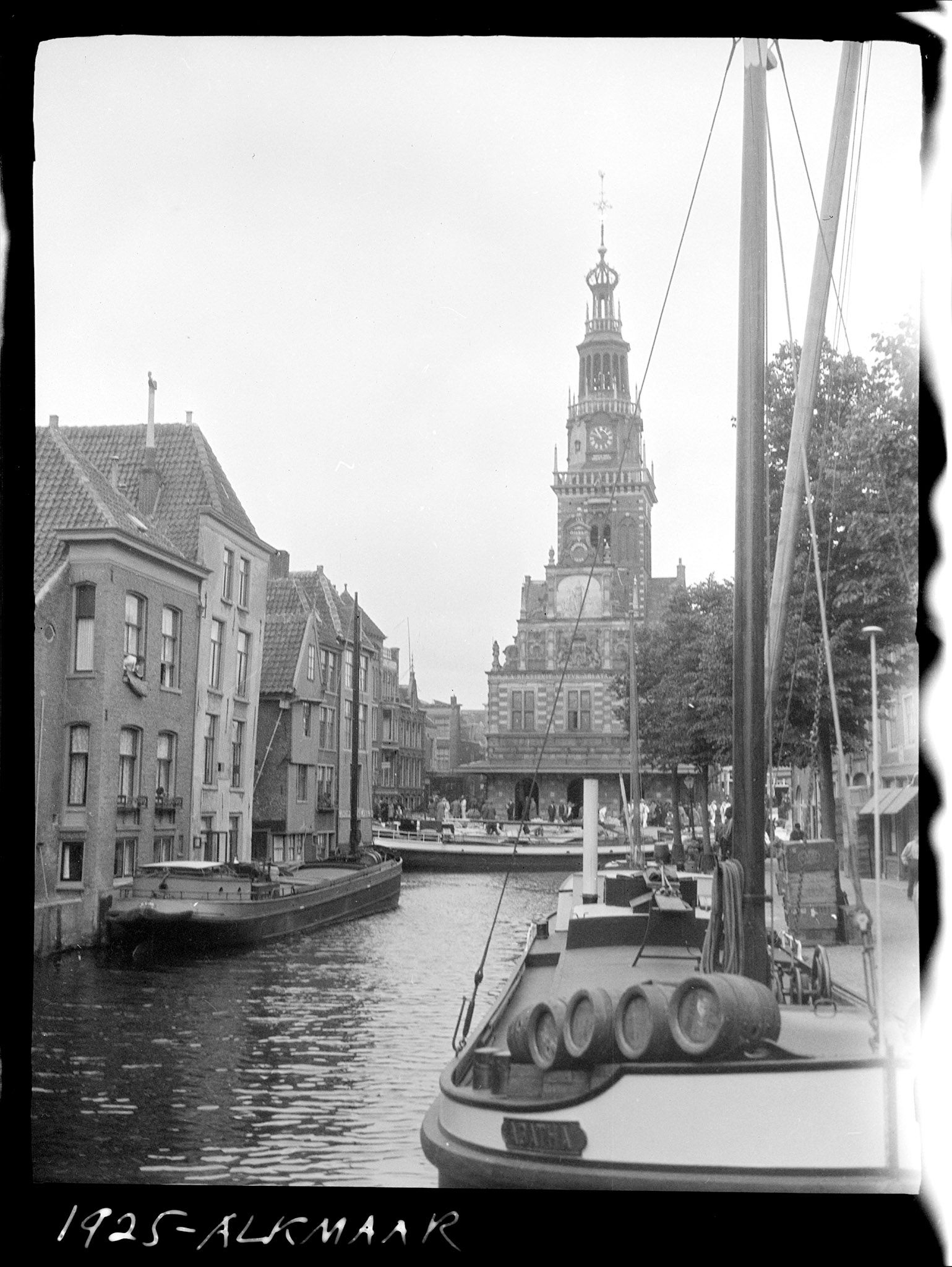
Hungerford’s photos depict a picturesque scene. Boats line the canals bordering the city of Alkmaar, waiting for the one event that shapes not only the city but also the culture of the people who live within its borders: the Alkmaar Cheese Market. This market is an important annual celebration with a longstanding history. For centuries, this city in the Netherlands has prided itself on its extensive array of cheeses and the market its people look forward to every summer.
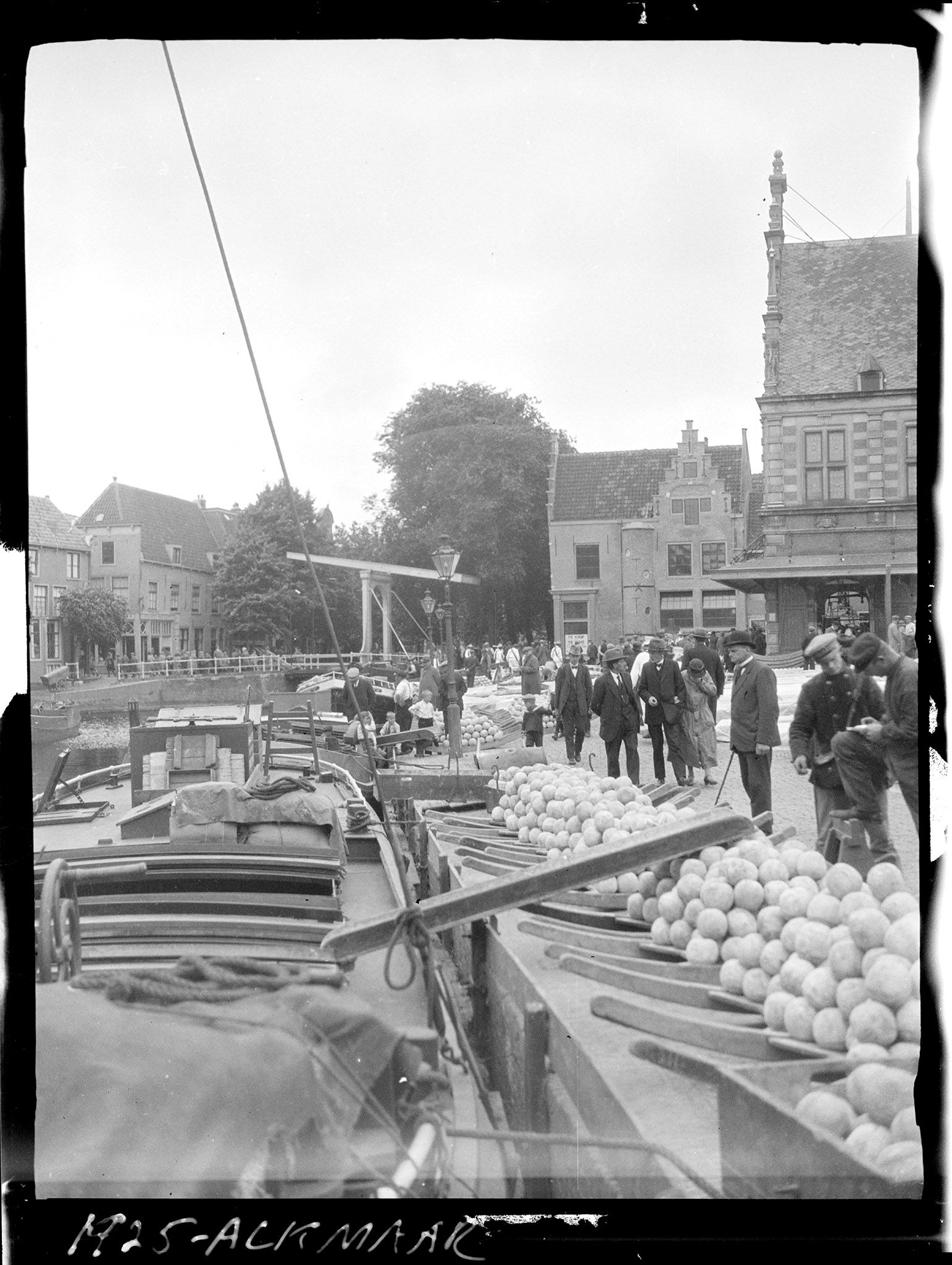
Alkmaar is a city, or municipality, that sits between the neighboring channels of Singelgracht and Afgesneden Kanaalvlak, which, when followed, lead out into the North Sea. Alkmaar is also conveniently located a few hours from the major port city of Amsterdam. The Netherlands is regarded as hosting the most weigh houses in the world, upwards of twenty. Weigh houses were not uncommon during the Middle Ages, as weighing and measuring were practices lordships utilized to control towns of major ports and trades.
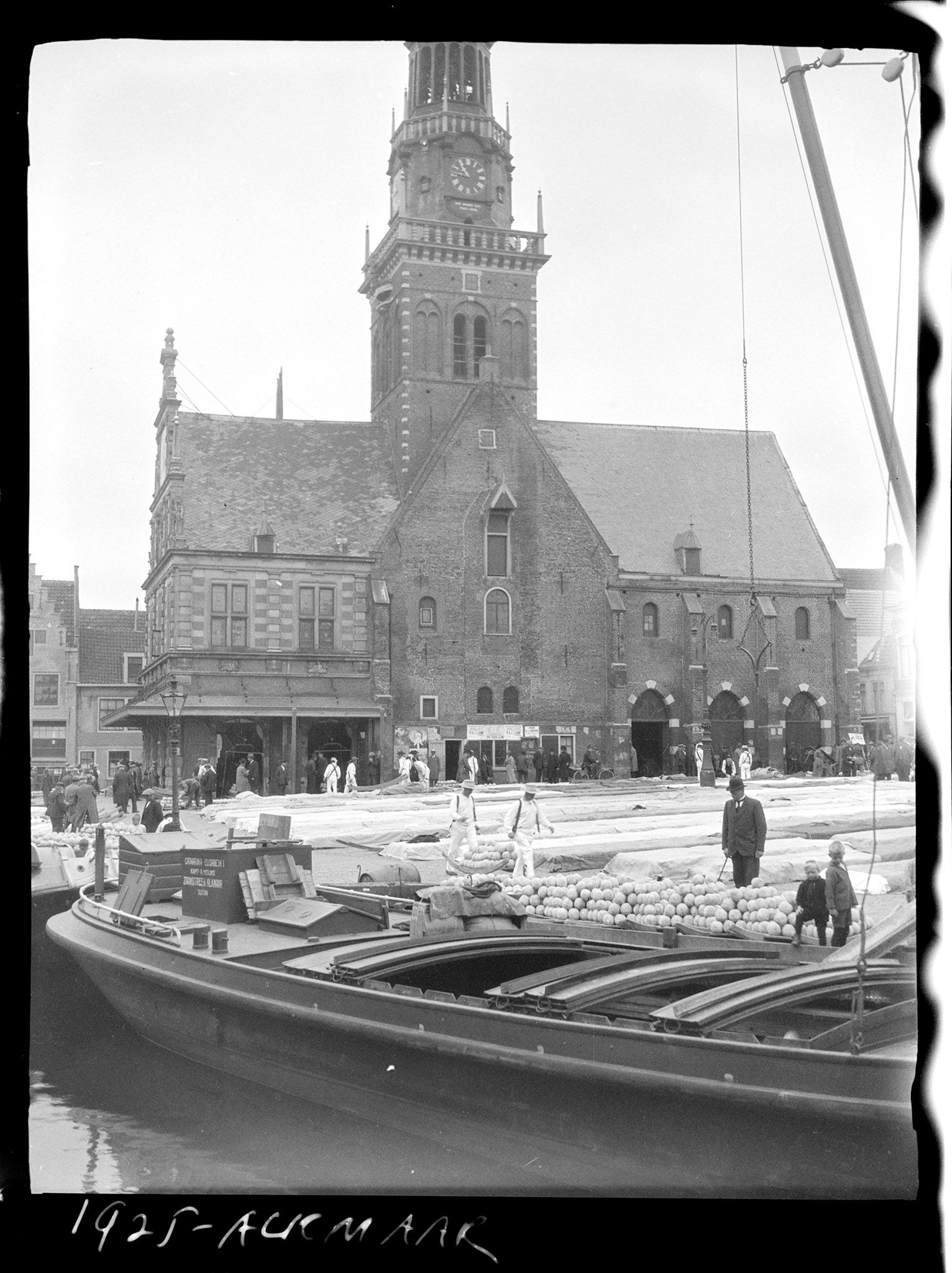
The history of the Alkmaar Cheese Market dates back to as early as 1593, with the cheese guild (yes they had a guild created for the workers who specialized in cheese) having been mentioned in archives as early as 1619. During the Dutch Golden Age, one of the major trade goods in Dutch trade became cheese. For 150 years, the Dutch Golden Age ignited a spark of creativity in the arts and sciences among the people of the Netherlands and allowed for the Dutch to become large commercial traders. The Dutch East India Company, or Verenigde Oostindische Compagnie, was the leading trading enterprise.
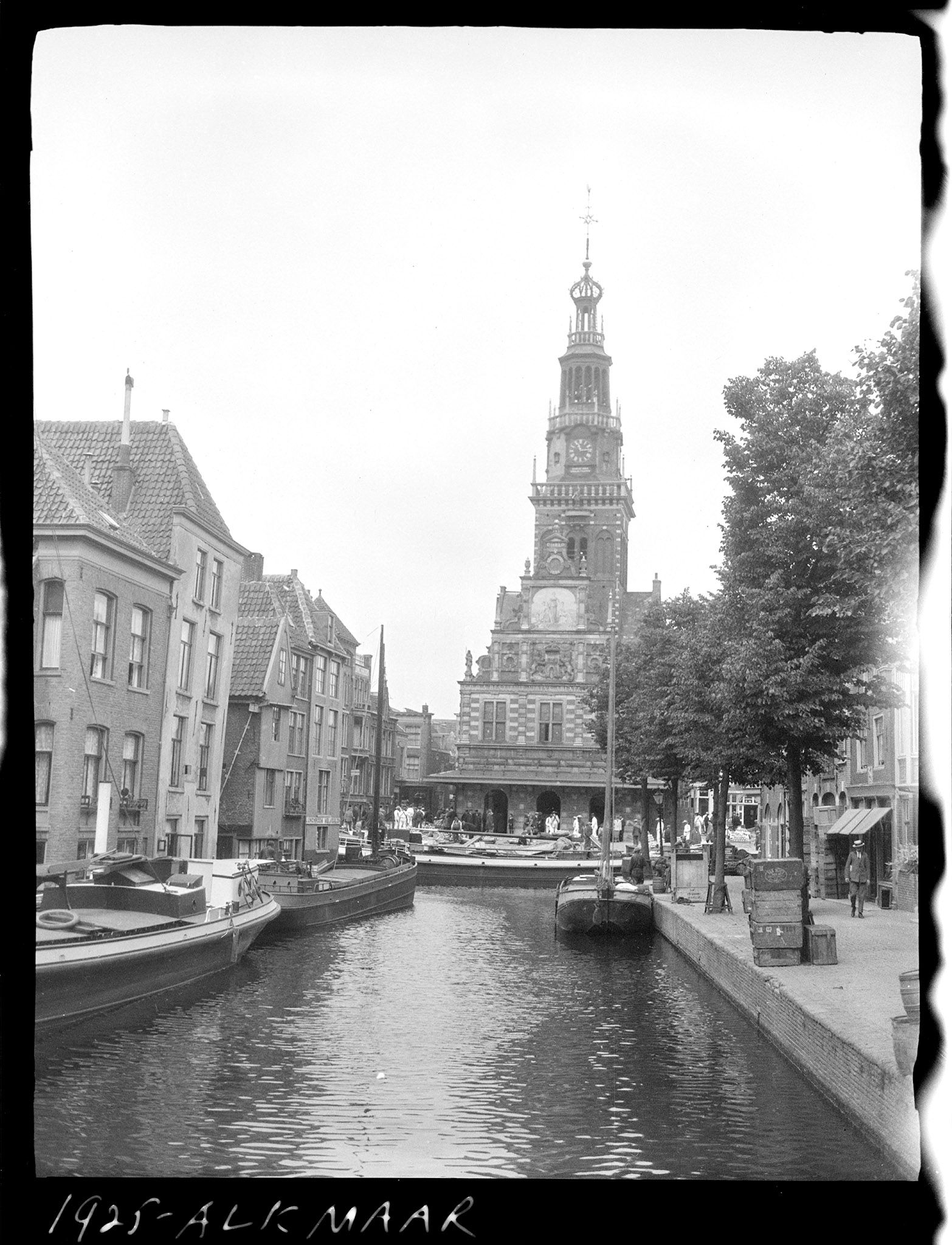
The Alkmaarians’ love of cheese is often presented through traditions such as the Cheese Market and the recent opening of the Alkmaar Cheese Museum or Kaasmuseum (“kaas” meaning “cheese”) located within the walls of the Waag and seen in these photos from our Collection. The traditions within the festival are just as captivating. Within the Waag are sets of scales to measure the size and weight of each ball of cheese. Currently, the festival uses upwards of six scales, but only one was originally used, dating back to the 1300s.
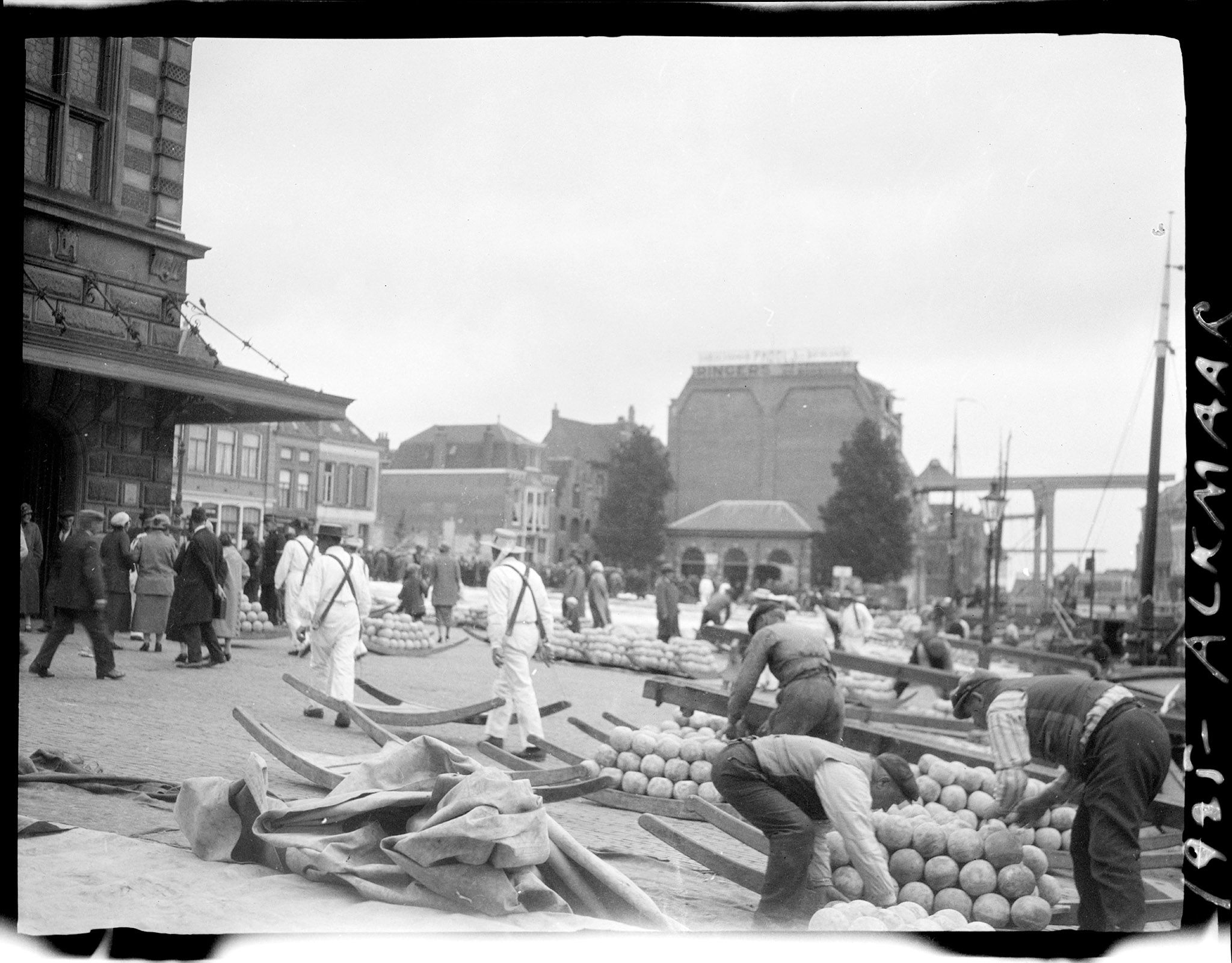
While many of the traditions and history of Alkmaar are expansive and this blog only briefly touches on the history of this Dutch city, the importance of exploring its history is still relevant. The beauty of places like the Alkmaar Cheese Market is that they showcase the life and culture of generations of people and their communities. In many ways, events such as the Cheese Market are like living history events. This market is still open today and thousands of people attend the summerlong festival. Each person brings a story, dresses the part, and goes about their day at the market showcasing heritage at every turn. Who knew we were not only connected to each other through the world’s waters but also through our love of cheese?
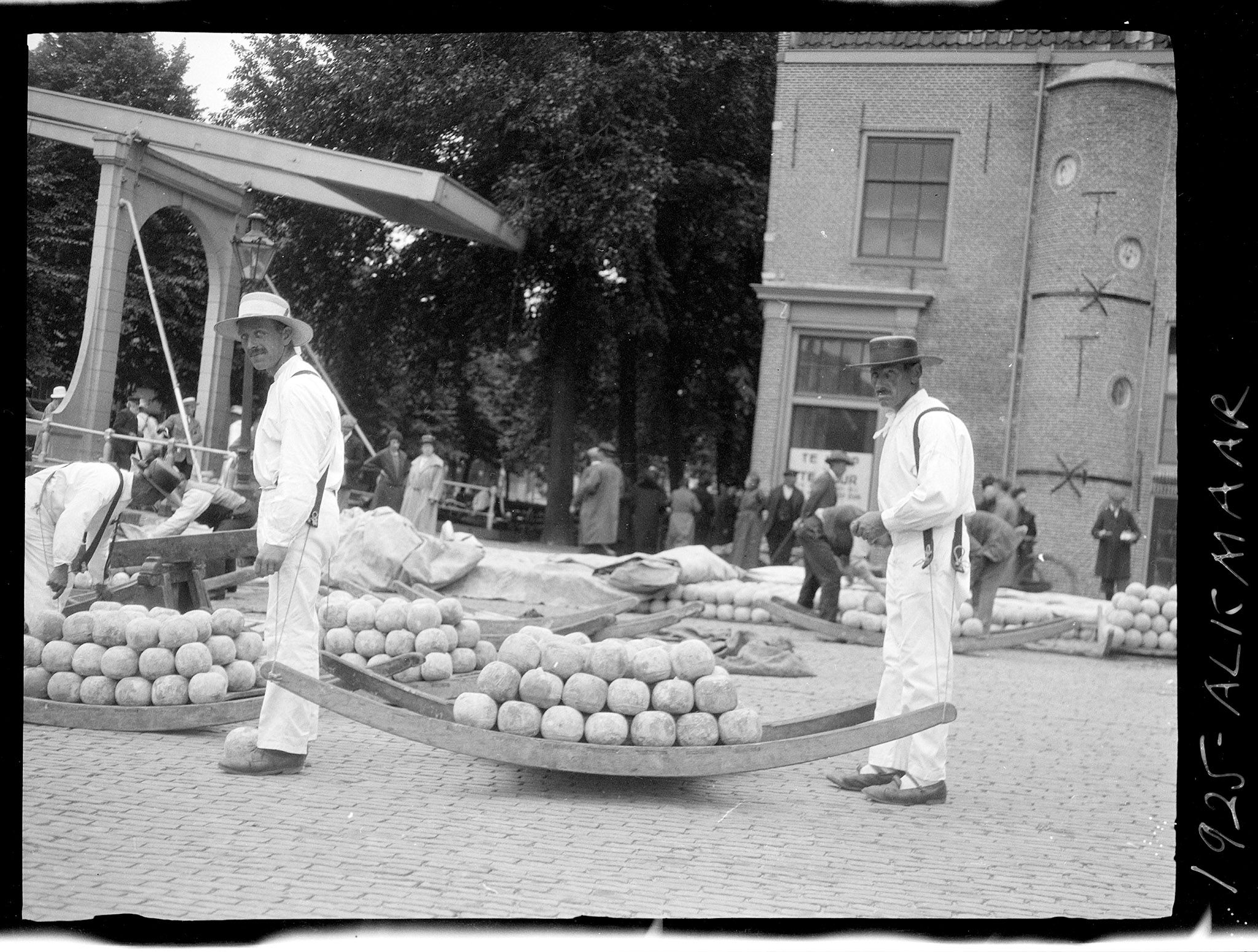
The Mariners’ Museum and Park MS0003–002.492-01988
Sources
“Archives of the Dutch East India Company.” Silk Roads Programme. UNESCO.
Dijkman, Jessica. “Weighing and Measuring.” Shaping Medieval Markets: The
Organisation of Commodity Markets in Holland, c. 1200 – c. 1450. 201–35. Brill. 2011. http://www.jstor.org/stable/10.1163/j.ctt1w76wdg.12.
“History of the Alkmaar Cheese Market.” Alkmaar Prachtstad. Accessed February 3, 2023.
https://www.visitalkmaar.com/en/cheese-market/history-of-the-alkmaar-cheese-market.
“Ins and Outs of the Cheese Market.” Alkmaar Cheese Market. Accessed February 4, 2023.
https://www.kaasmarkt.nl/en/cheesemuseum-and-history-cheesemarket/ins-and-outs-of-the-cheesemarket/.
Karabell, Shellie. “Lessons From The Dutch Golden Age: What Really Makes A Nation Great?”
Forbes Magazine. December 25, 2017. https://www.forbes.com/sites/shelliekarabell/2017/12/25/lessons-from-the-dutch-golden-age-what-really-makes-a-nation-great/?sh=a2034ba7e280.
Ottenheym, Konrad A. “Amsterdam 1700: Urban Space and Public Buildings.” Studies in the
History of Art 66. 2005. 118–37. http://www.jstor.org/stable/42622380.